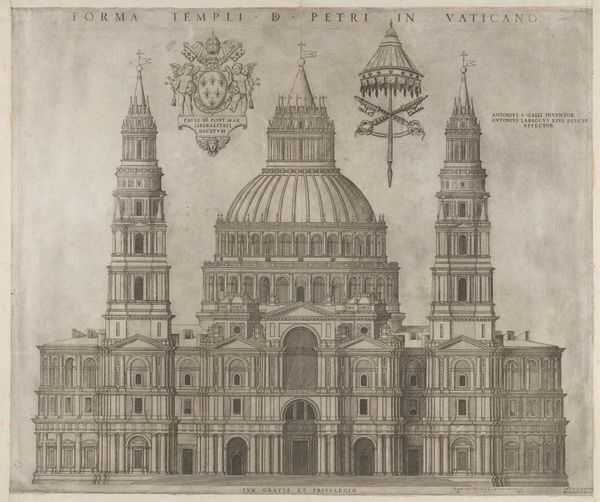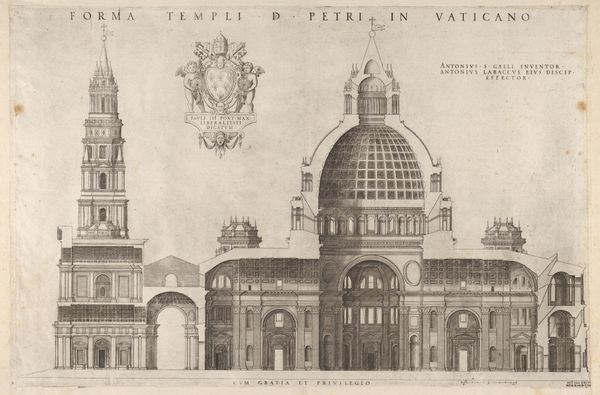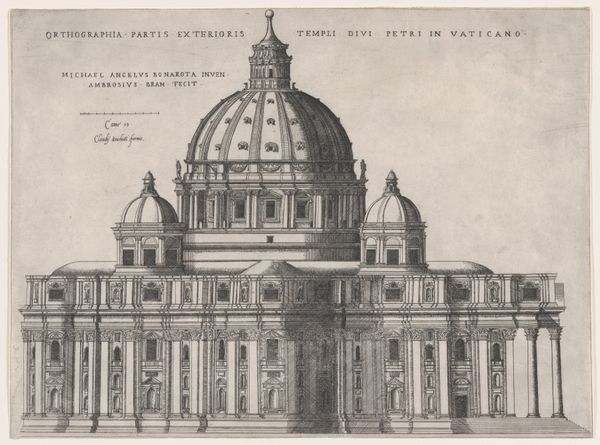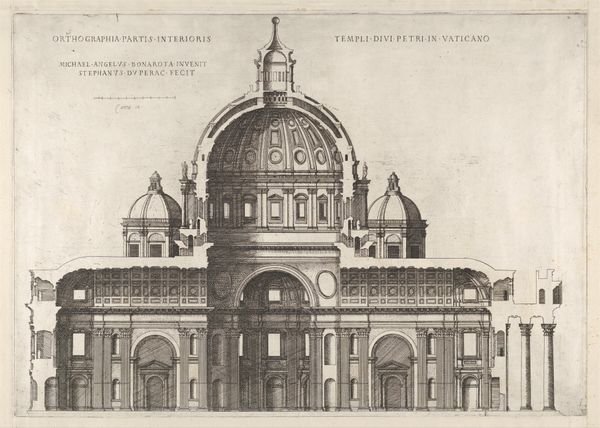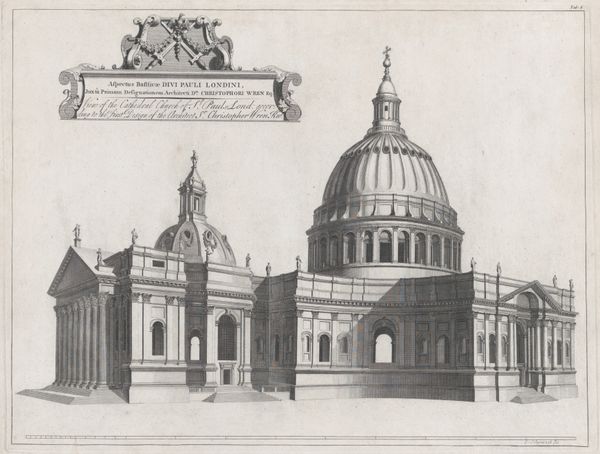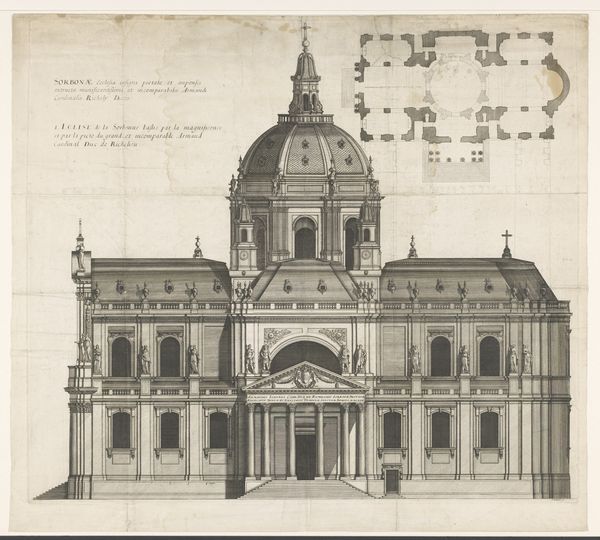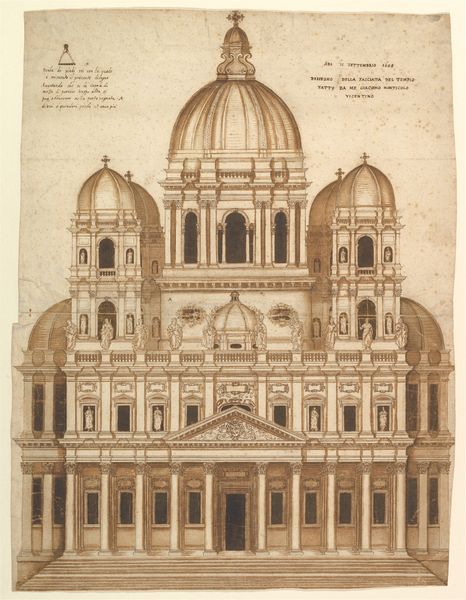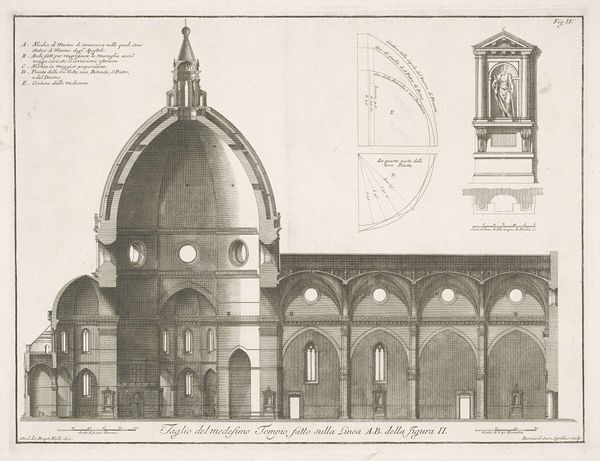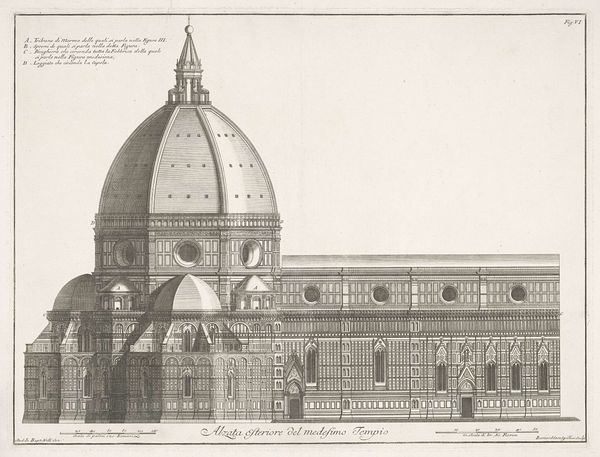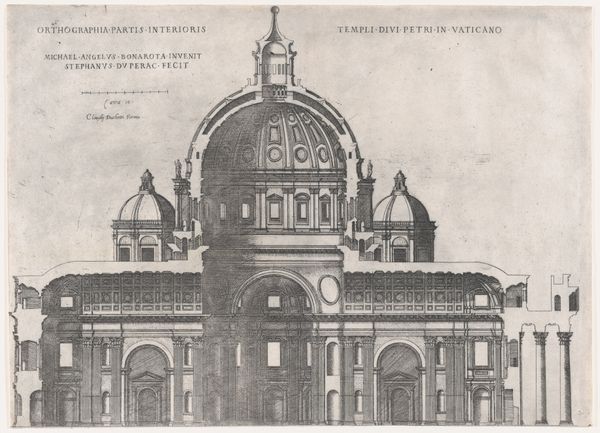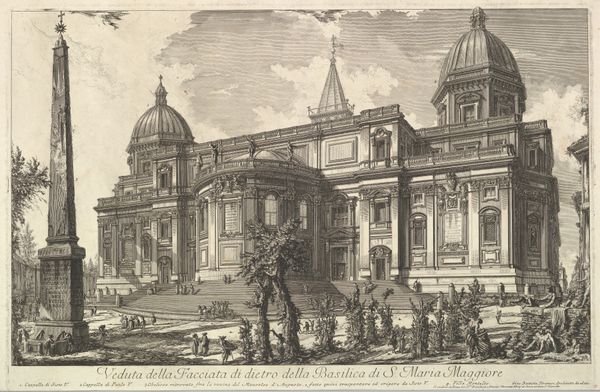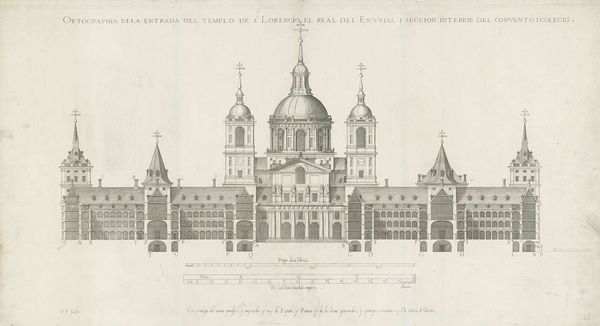
Antonio da Sangallo's project for St Peters, plan of the façade extended to the left with a tower 1540s
0:00
0:00
drawing, print, architecture
#
drawing
# print
#
landscape
#
form
#
11_renaissance
#
geometric
#
arch
#
ink colored
#
cityscape
#
italian-renaissance
#
architecture
Dimensions: sheet: 13 1/2 x 20 3/8 in. (34.3 x 51.7 cm) image: 12 7/8 x 20 in. (32.7 x 50.8 cm)
Copyright: Public Domain
Curator: Before us is a fascinating architectural drawing attributed to Antonio da Labacco from the 1540s, showcasing Antonio da Sangallo the Younger's ambitious project for St. Peter's Basilica. The print depicts the façade, extending to the left with a prominent tower. Editor: My initial impression? A colossal geometric symphony. There’s a weightiness, a sense of permanence almost screaming from the page despite it only being a drawing. All those lines, it's like a city turned on its side. Curator: Precisely. Labacco, known for his precision, meticulously renders the architectural details, highlighting the geometric forms—the arches, the dome, and the repeated rectangular patterns that structure the façade. Note the landscape style typical of architectural elevations from that period, emphasizing the building's intended visual impact. Editor: The symmetry is impressive, bordering on obsessive. But the off-center tower is a bold move, wouldn’t you say? It injects a kind of playful disruption into the otherwise rigid formality. Feels very human. Curator: Indeed, the placement introduces a dynamic tension within the composition. But beyond that, consider the semiotic implications of the unexecuted plan. This represents an alternate trajectory, a "what if" scenario in architectural history. The colored ink wash drawing offers us a lens into the creative process, revealing choices made and discarded in the grand scheme of St. Peter's design. Editor: It is ghostly too. The fact that this grandiose design exists now only in print, frozen in ink. Think of all the artisans, the laborers, whose hands would never realize this particular vision in stone. There’s a poignant beauty in that unrealized potential. Curator: Your interpretation speaks to the temporal paradox inherent in architectural drawings. While intended to materialize in stone and mortar, they often exist as ephemeral projections of intention. The very notion of "form" as an enduring theme is challenged by the inherent mutability of architectural projects. Editor: Yes, and by freezing a moment of “becoming” versus “being,” Labacco's plan invites us to reimagine spaces and power itself. You know, maybe sometimes the best buildings are the ones that only exist on paper. They represent pure idea, unburdened by the constraints of reality. Curator: An intriguing counterpoint, reflecting on how formal elegance meets practical realities. This analysis has really deepened my understanding of this remarkable work! Editor: Couldn’t agree more! Sometimes you have to look a little off the page to truly "see" an artwork’s lasting power.
Comments
No comments
Be the first to comment and join the conversation on the ultimate creative platform.
